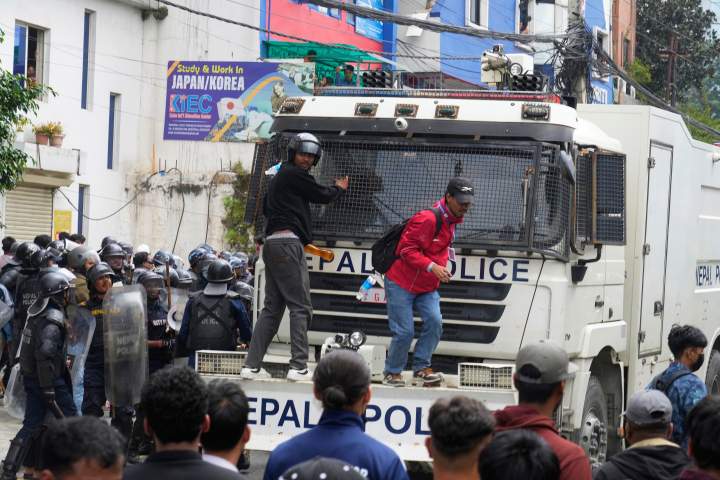World
Nepal Police Fire on Protesters, Leaving 11 Dead Amid Social Media Ban

Protests in Kathmandu, Nepal turned deadly on March 25, 2024, when police opened fire on demonstrators opposing a government ban on social media platforms, resulting in at least 11 fatalities and numerous injuries. The violent confrontation erupted as tens of thousands took to the streets to voice their dissent against the government’s decision to block access to popular sites such as Facebook, X, and YouTube, claiming these companies failed to register with local authorities.
According to Dr. Badri Risal of the National Trauma Center, seven of the deceased were pronounced dead at the facility, with an additional 58 injured individuals receiving treatment. Many of the wounded sustained serious injuries, reportedly from gunfire to the head and chest. Families braced for anxiety outside the hospital as crowds lined up to donate blood.
The violence escalated when protesters, frustrated by the government’s restrictions, overwhelmed police barricades and surrounded the Parliament building. Riot police attempted to disperse the crowd with tear gas and water cannons, but found themselves outnumbered and retreated into the complex for safety. Eventually, officers resorted to live ammunition to control the situation.
In response to the chaos, the government imposed a curfew around key areas of Kathmandu, including Parliament and the presidential residence, in an effort to restore order. Protesters chanted slogans such as “Stop the ban on social media, stop corruption, not social media,” waving the red and blue national flags of Nepal.
The demonstrations, dubbed the “protest of Gen Z,” represented a generation born between 1995 and 2010. Participants expressed their outrage over the government’s recent actions, which had seen approximately two dozen social media platforms blocked for failing to comply with registration requirements. While TikTok, Viber, and others have successfully registered and continued operations, the ban significantly impacted communication for many users.
The government’s move to obstruct social media access coincided with proposed legislation aimed at regulating these platforms more stringently. This bill seeks to ensure that social media companies are “properly managed, responsible, and accountable,” requiring them to establish a local liaison office. Critics consider the legislation a potential tool for censorship, aimed at silencing government dissenters online.
Human rights organizations have condemned the government’s actions, arguing that such measures violate fundamental rights and threaten freedom of expression. In 2023, the government had previously banned TikTok for disrupting social harmony, although the ban was lifted after the platform’s executives agreed to adhere to local laws, including restrictions on pornographic content established in 2018.
As the situation develops, the international community watches closely. The violent crackdown on protesters raises significant concerns about civil liberties and the government’s commitment to upholding democratic principles in Nepal.
-

 Science3 months ago
Science3 months agoToyoake City Proposes Daily Two-Hour Smartphone Use Limit
-

 Top Stories3 months ago
Top Stories3 months agoPedestrian Fatally Injured in Esquimalt Collision on August 14
-

 Health3 months ago
Health3 months agoB.C. Review Reveals Urgent Need for Rare-Disease Drug Reforms
-

 Technology3 months ago
Technology3 months agoDark Adventure Game “Bye Sweet Carole” Set for October Release
-

 World3 months ago
World3 months agoJimmy Lai’s Defense Challenges Charges Under National Security Law
-

 Lifestyle3 months ago
Lifestyle3 months agoVictoria’s Pop-Up Shop Shines Light on B.C.’s Wolf Cull
-

 Technology3 months ago
Technology3 months agoKonami Revives Iconic Metal Gear Solid Delta Ahead of Release
-

 Technology3 months ago
Technology3 months agoApple Expands Self-Service Repair Program to Canada
-

 Technology3 months ago
Technology3 months agoSnapmaker U1 Color 3D Printer Redefines Speed and Sustainability
-

 Technology3 months ago
Technology3 months agoAION Folding Knife: Redefining EDC Design with Premium Materials
-

 Business3 months ago
Business3 months agoGordon Murray Automotive Unveils S1 LM and Le Mans GTR at Monterey
-

 Technology3 months ago
Technology3 months agoSolve Today’s Wordle Challenge: Hints and Answer for August 19









